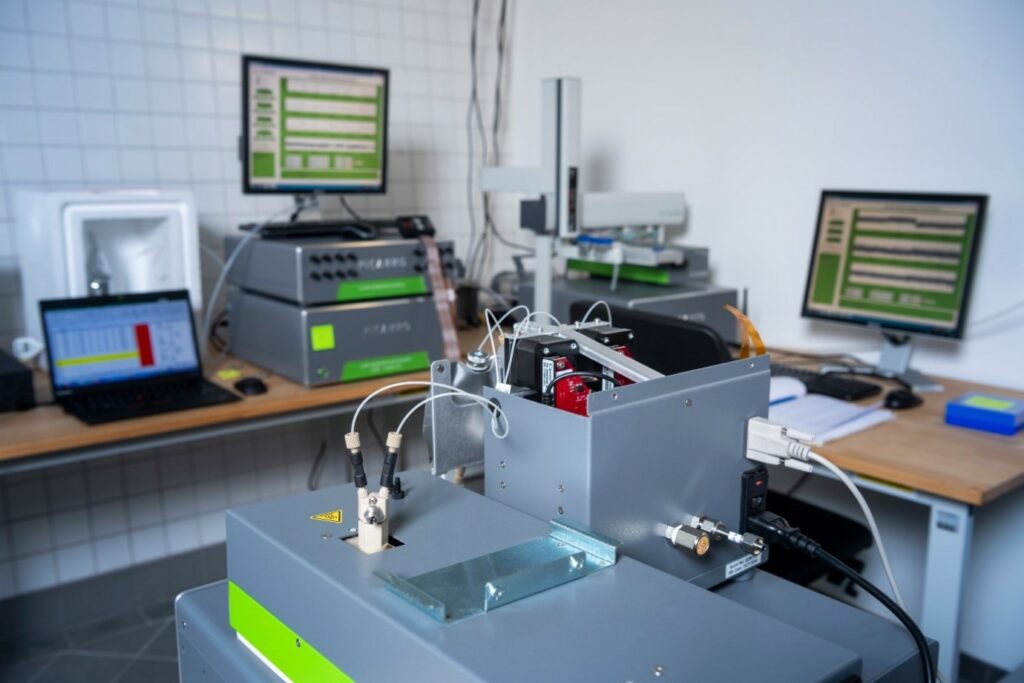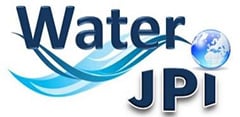Ecohydrological boundary conditions for Ecosystem Services of aquaNBS
By Michael Monaghan and Dörthe Tetzlaff IGB
The WP4 team is interested in how the sources and flow pathways of water affect the persistence of urban aquaNBS and the biodiversity they contain. The approach uses two types of tracers, stable water isotopes and eDNA. Both give clues as to the sources and flow pathways of the water, and give information about the age of the water. These data are combined using ecohydrological models to relate the source of the water to the resilience and biodiversity of an aquaNBS. Stable water isotopes provide a signal of the material a water molecule was in contact with – like fingerprints. eDNA tell us which micro-organisms are found in the water, including bacteria, algae, and diatoms. Each method is presented in more detail below.

Isotope laboratory, eDNA sampling
We use stable water isotope techniques to precisely determine the origin and pathways of a water molecule in the water balance of a landscape. Thus, the transformation of precipitation into plant, ground- or surface water can be quantified. Isotopes are variants of a chemical element with the same number of protons in the atomic nucleus, but with different numbers of neutrons. Therefore, they have different physical properties, for example in the absorption of light. Within novel laser spectroscopy, this effect is used by projecting a laser beam into a chamber and recording the change in intensity over time. Each sample measured in IGB’s modern isotope laboratory produces, thus, a unique, characteristic record. The water molecules get their own “fingerprint” and can be measured in our laboratory in liquid samples like rain or stream, or groundwater samples as well as in complex samples like soil or plants. For a comprehensive understanding, it is not only the absolute quantities of water in the landscape that are important, but also how long the water remains on site, how old that water is and which paths it takes. We also analyse how climate change and urbanisation affect the water balance.
For the eDNA analysis, approximately 500 ml of water from each aquaNBS in the BiNatUr study is filtered on-site. These filters are preserved and shipped to IGB in Berlin where they will be analysed. DNA from all the organisms trapped on the filter, including cells and tissues from larger organisms, is used to determine the genetic code (A C T G…) of the 18S rRNA gene using “next-generation” sequencing. Because most organisms have a unique sequence, they can be identified similarly to the way we use barcodes in the supermarket.
WP4’s working hypotheses are that stable water isotope tracers and eDNA improve the characterization of the complex sources and pathways of water in cities, including water residence times, and that these effects can be quantified by tracer-aided ecohydrological modelling.
In each city, the team samples precipitation, surface water, groundwater, and effluents from any nearby sewers and wastewater treatment plants. Samples are analysed in the isotope and genomics laboratories of IGB in Berlin, Germany. We use the EcH2O-Iso model with urban-specific elements to quantify storage dynamics, fluxes and ages of water.

Project funders:
This research was funded through the 2020-2021 Biodiversa and Water JPI joint call for research projects, under the BiodivRestore ERA-NET Cofund (GA N°101003777), with the EU and the funding organisations The Research Foundation - Flanders (FWO), Belgium; Academy of Finland (AKA), VDI/VDE-IT, Germany; National Science Center (NCN), Poland and Fundação para a Ciência e Tecnologia (FCT), Portugal

